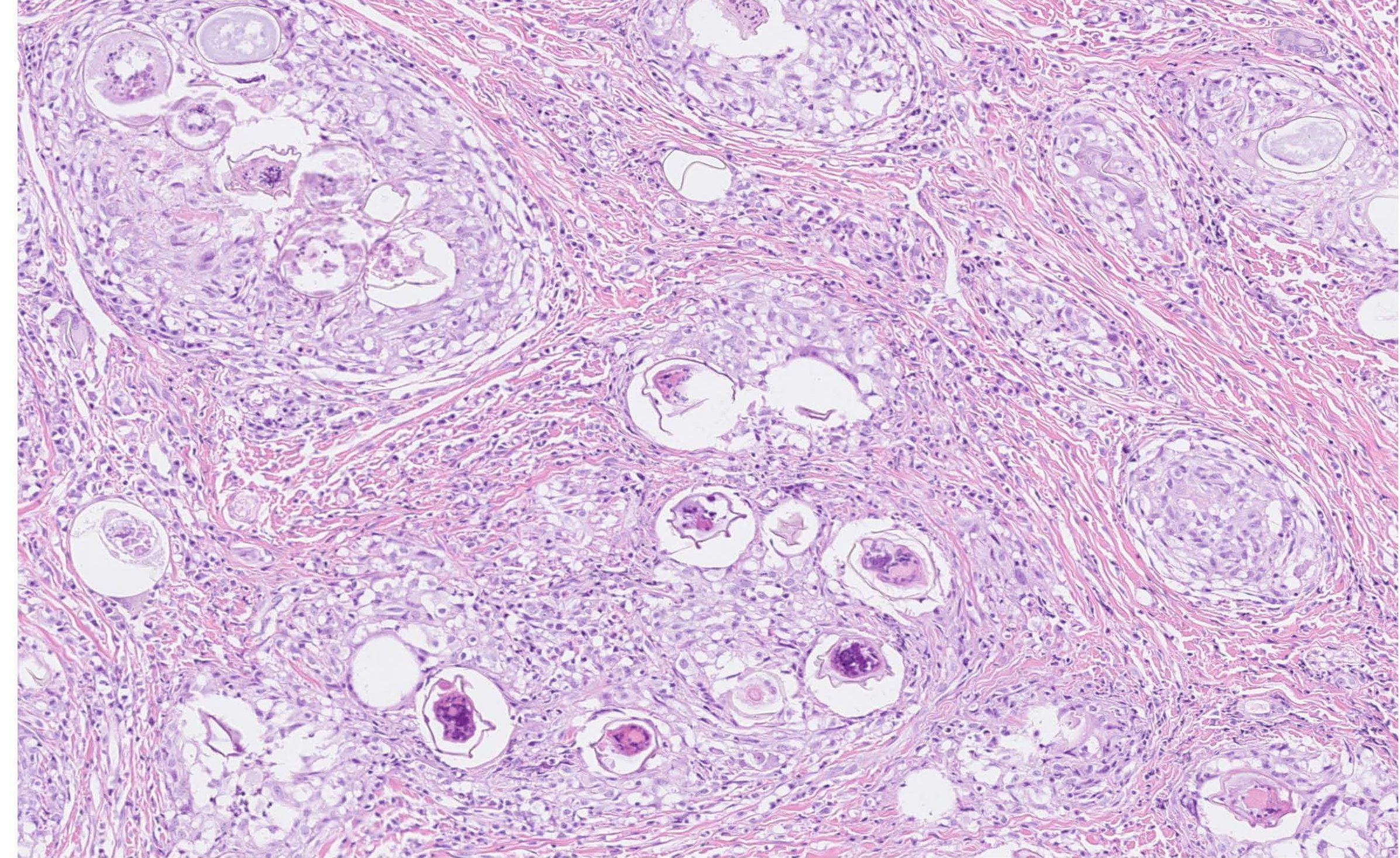Heterobilharzia americana Infection in a Dog
Jay Hoffman, DVM, PhD
Small intestinal biopsy samples from a two-year-old German Shepherd dog were submitted to the Texas A&M Veterinary Medical Diagnostic Laboratory (TVMDL) in College Station. The clinical history indicated chronic diarrhea for the last six months, normal blood parameters and no parasites noted on fecal floatation. When the biopsies were examined there were numerous white nodules noted in the wall of the small intestine (Figure 1). Microscopically these nodules contained numerous trematode ova, approximately 45-90 um in diameter, located within the deep muscular layers of the small intestine. Surrounding the trematode ova were thick strands of fibrous connective tissue entrapping infiltrates of multinucleated giant cells, macrophages, lymphocytes, and plasma cells. The trematode ova were histologically compatible with Heterobilharzia americana.
Heterobilharzia americana is a trematode parasite endemic to the Gulf Coast region of Texas. The adults are blood parasites and live in the mesenteric veins where mating occurs. The female produces thousands of ova that lodge in the enteric venules, secrete proteolytic enzymes and eventually gain access to the lumen of the small intestine. Other ova become lodged in the wall of the small intestine and induce granulomatous inflammation. Some of the ova bypass the enteric venules and become lodged in the liver, lymph nodes, and pancreas and induce inflammation. Once the ova are passed in the feces, they hatch and form miricidia once they contact water. These miricidia penetrate the soft tissues of freshwater snails where they reproduce and release free-swimming cercariae. The cercariae can invade the skin or mucous membranes of the definitive host (dogs or wild mammals) and gain access to the bloodstream, migrate to the liver, mature, and migrate to the mesenteric vessels to complete the life cycle. The clinical signs observed in infected animals include weight loss, hematochezia, melena, diarrhea, vomiting, and lethargy. It is likely that the clinical signs are primarily caused by the inflammation induced by the trematode ova.
For more information about this case, contact Dr. Jay Hoffman, veterinary pathologist, at the College Station laboratory. To learn more about TVMDL’s test offerings, visit tvmdl.tamu.edu or call 1.888.646.5623.
